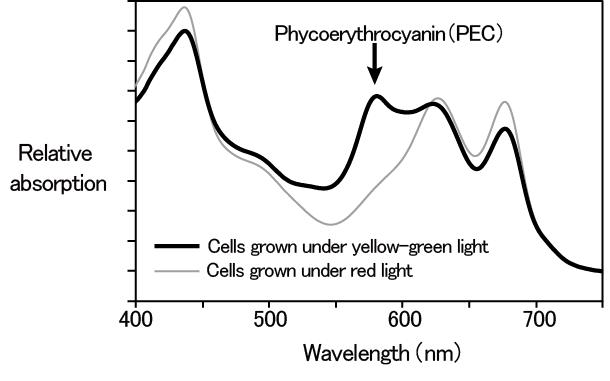
Credit: COPYRIGHT (C) TOYOHASHI UNIVERSITY OF TECHNOLOGY. ALL RIGHTS RESERVED.
Cyanobacteria, a type of bacteria that performs photosynthesis, utilize a photosensor that regulates green and red light-harvesting antenna proteins for photosynthesis. A joint research team from Toyohashi University of Technology, the University of Tokyo, and the National Institute for Physiological Science found a new photosensor that regulates yellow-green light-harvesting antenna protein in cyanobacteria. Further analysis of the cyanobacterial genomes revealed that this photosensor emerged about 2.1 billion years ago or more and evolved through genetic exchange (horizontal gene transfer) between cyanobacteria.
Photosynthesis is a reaction that converts light energy into chemical energy and, it is an important reaction that supports all organisms living on the earth. Cyanobacteria are prokaryotes that perform oxygenic photosynthesis and are found in all kinds of environments throughout the world. Cyanobacteria have three types of major antenna proteins for harvesting lights: phycocyanin (PC) for absorbing red light, phycoerythrin (PE) for absorbing green light, and phycoerythrocyanin (PEC) for absorbing yellow-green light. To date, it has been known that the amount of PC and PE are regulated by a photosensor of phytochrome-class, but no research has been reported on the regulation of PEC.
Assistant Professor Yuu Hirose at the Department of Applied Chemistry and Life Sciences, Toyohashi University of Technology, in a joint research project with the University of Tokyo and the National Institute for Physiological Science, discovered a new photosensor regulating the amount of PEC. By searching through the genome database, the research team identified several cyanobacteria strains that harbors both PEC and the photosensor genes. Furthermore, they cultured one of the cyanobacteria strains and showed that the amount of PEC depends on the color of the light (Fig. 1).
Further analysis of about 450 cyanobacteria genomes revealed that this photosensor regulating PEC emerged only once about 2.1 billion years ago or more and evolved through a genetic exchange between cyanobacteria strains (Fig. 2 and 3), which is a process called horizontal gene transfer. The photosensor was preferentially distributed among filamentous and multicellular strains but not unicellular strains. These cyanobacteria strains may utilize different light colors for photosynthesis between cells and share limited light energy.
PC and PE are currently used as natural food color additives in some foods. The result of this research can be applied to the mass production of PEC and the development of new food products. This finding may also be applied to the improvement of light energy conversion of photosynthesis and applied to research fields for the regulation of genetic functions using light illumination.
###
Reference:
Diverse Chromatic Acclimation Processes Regulating Phycoerythrocyanin and Rod-Shaped Phycobilisome in Cyanobacteria.
Hirose Y., Chihong S., Watanabe M., Yonekawa C., Murata K., Ikeuchi M., Eki T.
Molecular Plant (2019) Feb 26. in press. doi: 10.1016/j.molp.2019.02.010.
Media Contact
Yuko Ito
[email protected]
Related Journal Article
http://dx.




